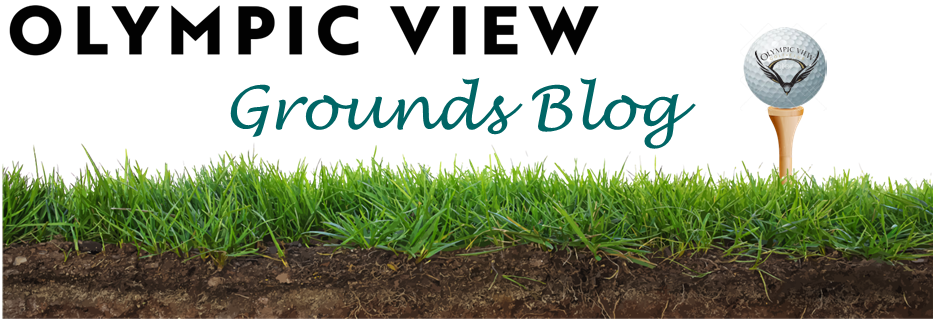It's that time of year again. The sun comes out, the grass starts to green up and even grow a little bit! Golfers and golf course maintenance teams alike get excited for the coming season.
We've been fortunate to receive numerous comments lately on how nicely the greens are rolling and we most definitely appreciate the good feedback! Usually around now is when the disappointment comes for golfers though. The Grounds Team rolls out the aerator, punches holes, perhaps removes cores and dumps a bunch of sand on the greens. In effect taking the good momentum we had going and placing it on the shelf for a few weeks.
This year we are happy to report that we will be able to avoid this disappointment. There will be no major greens aeration this spring - lets keep these greens rolling nice! As much as we know this may be appreciated, I am sure the questions are quick to follow - how we are able to do this and will this create problems down the road? The short answer is no, not in the immediate future. For a longer answer let's dig into some science.
In late January of 2021 and 2022, we took core samples across numerous greens on the course with the goal of collecting both a baseline organic matter level, and also the change, or lack thereof, in organic matter percentage over last season.
(A little sidebar on what is organic matter for those who may be wondering. Organic matter in a putting green is both the living and dead/decaying leaf and root tissue. During growth, the plant sheds old tissue and creates new. While organic matter has benefits in our sand based root zone including holding moisture, nutrients and creating resiliency, too much of a good thing can be bad. Excessive levels of organic matter can make greens spongy, soft, more susceptible to disease and a whole host of other undesirable putting green characteristics. Let's avoid those ok? Practices like aeration and topdressing are used to keep organic matter at acceptable levels.)
Back to the testing. We took 5 samples from each green and cut the cores in 2 cm increments. The like depths are grouped together and sent off to a lab in Ohio where they measure the dried sample weight, place the sample in an oven and burn all the organic matter to ash. The weight is again measured and the difference can be calculated to the percentage of organic matter that was in the sample.
While this is not a new testing technique, it has become more adopted by turfgrass managers around the globe, especially the ones that enjoy science and numbers like myself. While we have three depths of measurement, the 0-2cm measurement is the important one. This is where the golf ball meets and interacts with the turfgrass surface, where the rubber meets the road you could say.
 |
| Image courtesy Dr. Micah Woods, Asian Turfgrass Center, Thailand. |
Great, so we have some numbers, next question. What's the magic number? Well, there isn't really one. Here is where the science of green keeping blends with the art. The art is how are the greens playing? How do they receive a ball? What does the ball mark look like? Are you seeing scalping from mowers? Holding excessive moisture? We observe these and other indicators throughout the year, pair those observations with our organic matter numbers and then design a greens maintenance program to increase, decrease or perhaps just maintain organic matter levels. Based on the information we have tested for and observed over the past year, at this time we do not need to aerate greens. We are content with the current organic matter levels.
To avoid rambling on too long, I'm going to break this into two or three posts to further delve into what is involved in greens maintenance programs designed to increase, decrease or maintain organic matter levels.
To close off today though, I will answer one last question. Does this mean we will never have to aerate greens again? No, I'm not going to say that. We will continue to learn the greens at Olympic View, monitor how they play, test organic matter levels and make calculated decisions with the goal of having optimum playing conditions for as many days per year as possible.






